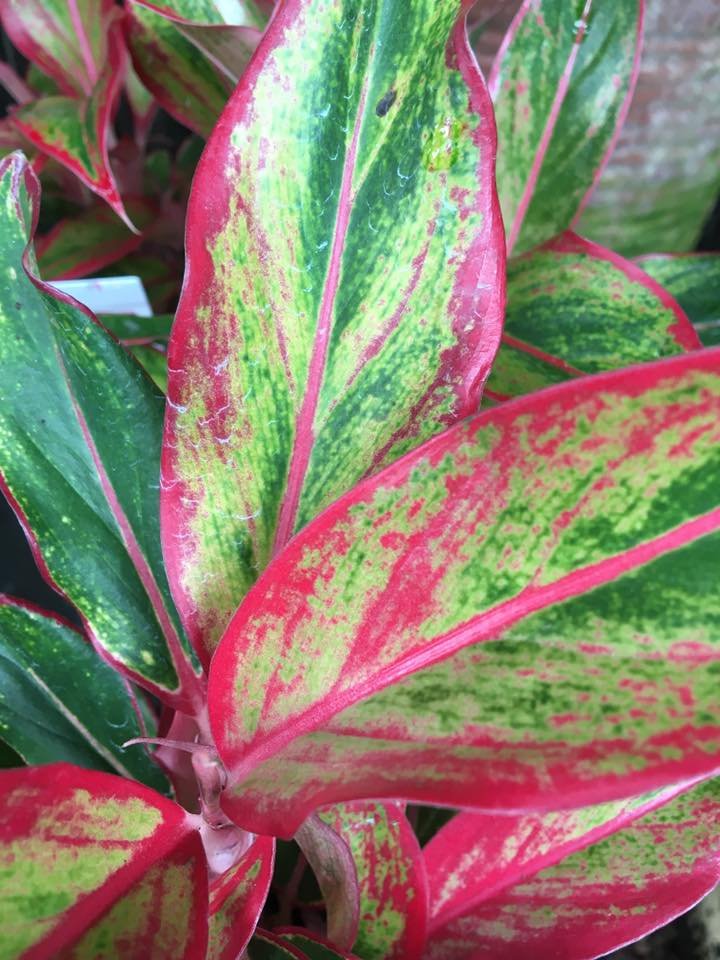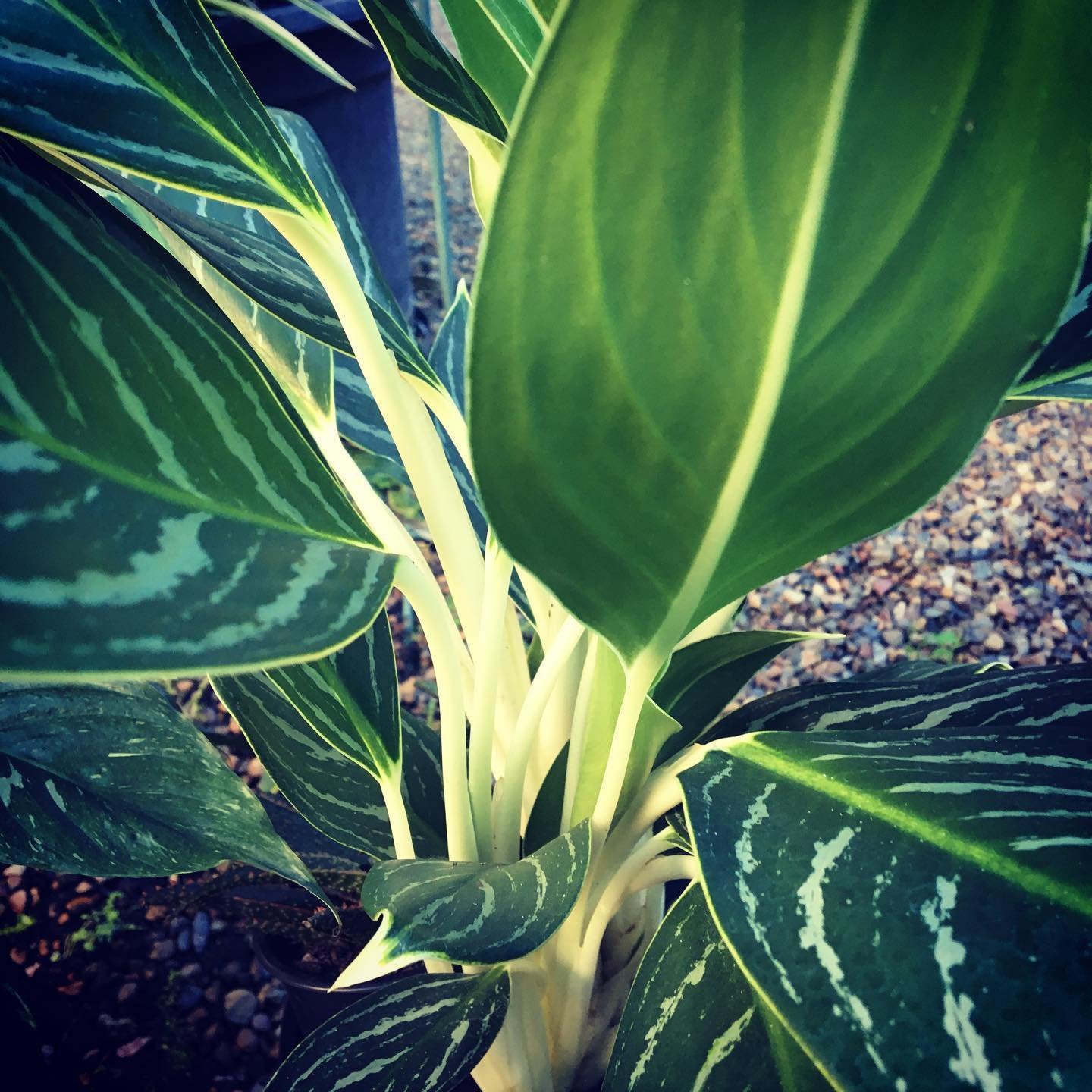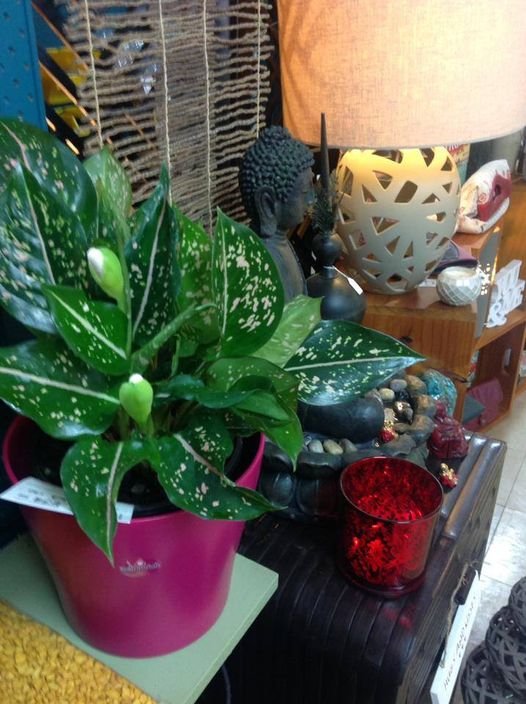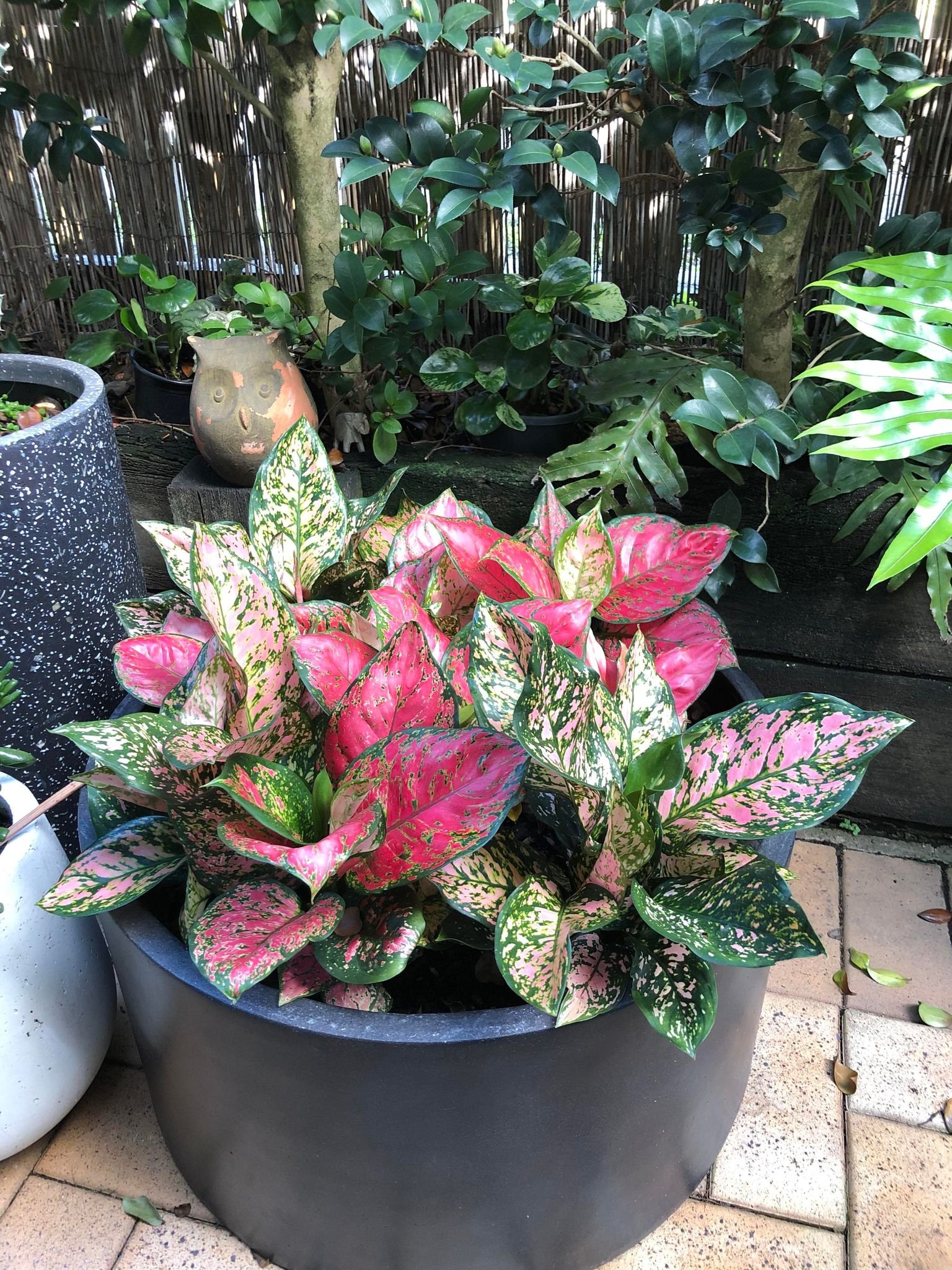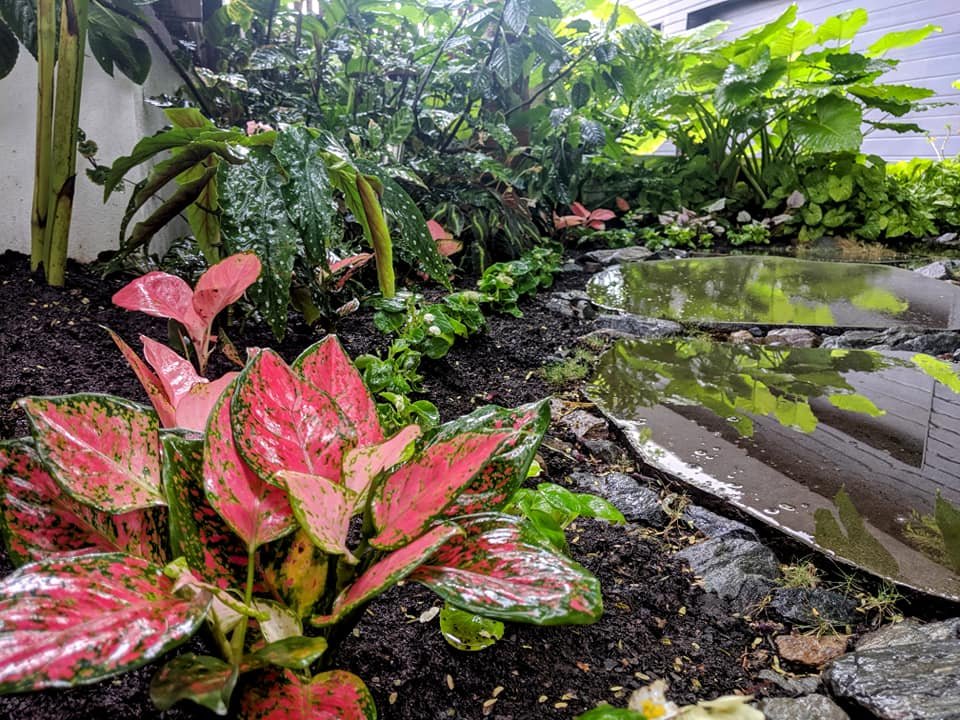Aglaonema, pronounced Agg-low-neem-uh, is another one of my all time favourite house plants.
I think I'm a foliage girl more than a flowery girl.
What’s not to love?
Spectacular Foliage Colours
Fabulous Indoors Plant
Grows well outside in Full Shade but can tolerate a little sun
Great for Pots or Gardens
Tolerates Dry Conditions
Aglaonemas have attractive glossy variegated foliage and colourful stems. They can be green and white, shades of pink, pink and green, pink and white and all shades in between. There are so many variations it’s easy to start a collection.
I grow them just for the foliage but they do flower it’s just not anything to write home about.
I feel they bring a lovely tropical feel to your indoor space.
Aglaonemas are relatively slow growing. They don't like having wet feet or being overpotted. I find it's better to treat them mean to keep them looking good. I have killed a few over the years simply by never letting them dry out. I now still use an excellent quality potting mix, like Searles Platinum Mix but I just don't water as often and I never let them sit in a saucer of water.
I find Aglaonemas can handle a dark position inside but really thrive in a well lit position. They also don’t mind being planted in gardens or pots outside in shady positions.
I find Aglaonemas to be so versatile, I love using them around the home. Up high, down low, they seem to suit all positions. As an added bonus these plants are known as luck-bringers and The NASA Clean Air Study determined that they were effective at removing common household air toxins formaldehyde and benzene.
So they really are the perfect houseplant. To keep them continually looking good and putting on a great display, fertilise with Plant of Health Eco Friendly Fertilisers Organic Link about every three months and a fertilise of granular sulphate of potash, usually once weather has warmed up, around late August to help to help the foliage remain vibrant. I also like to keep their leaves free from dust so every few weeks I take them outside and give it a liquid feed (and shower) with Triple Boost Liquid Fertiliser.
On a side note Aglaonemas are not for human or animal consumption. These plants, like many others, are considered poisonous as they contain calcium oxalate crystals. If ingested they cause irritation of the mucous membranes, and the juice can cause skin irritation and painful rash. So as with all plants unless you know its edible ... Don't eat it!

